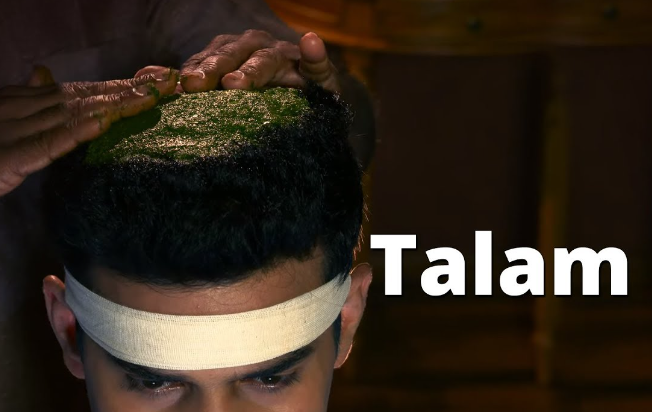Explore the ancient Ayurvedic concept of Thalam, its significance in holistic healing, and how it aligns with modern wellness practices.
In the realm of Ayurveda, an ancient system of medicine originating from the Indian subcontinent,it holds a significant place as a therapeutic technique. Rooted in holistic principles, Ayurveda views health as a balance between the body, mind, and spirit. Thalam, an integral part of Ayurvedic treatments, encompasses various practices aimed at restoring this balance.
What is thalam?
It, derived from the Sanskrit word “thal,” meaning plate or dish, refers to a specific therapeutic method in Ayurveda. It involves the application of herbal pastes or medicated substances on the forehead or specific parts of the body. This technique is believed to have a profound effect on the central nervous system, promoting relaxation, rejuvenation, and overall well-being.
Also read: The Ancient Art Of Abhyangam: A Holistic Journey To Wellness

The Science Behind it
According to Ayurvedic principles, the forehead is considered the site of the third eye or Ajna chakra, which is associated with intuition and perception. By applying herbal pastes or oils to this area, Thalam aims to stimulate and balance the vital energy centers, or “chakras,” facilitating the flow of “Prana,” or life force, throughout the body.

Types
Therapy comes in various forms, each tailored to address specific health concerns:
- Shiro Thalam involves applying medicated pastes or oils to the forehead, promoting mental clarity, and alleviating stress and tension.
- Netra Thalam focuses on treating eye disorders by applying herbal preparations around the eyes, improving vision, and relieving eye strain.
- Kati Thalam targets the lower back region and is commonly used to alleviate lower back pain, sciatica, and muscular stiffness.
- Greeva Thalam: concentrates on the neck and shoulder area, offering relief from cervical spondylosis, stiffness, and associated discomfort.

Benefits of it
Thalam therapy offers a wide range of benefits, including:
- Stress Reduction: By promoting relaxation and calming the mind, it helps alleviate stress and anxiety.
- Improved Circulation: The application of herbal pastes or oils stimulates blood flow, enhancing circulation throughout the body.
- Pain Relief: Thalam therapy is effective in alleviating various types of pain, including headaches, muscular aches, and joint discomfort.
- Enhanced Mental Clarity: By balancing the vital energy centers, it promotes mental clarity, focus, and overall cognitive function.
- Holistic Healing: Thalam aligns with the holistic principles of Ayurveda, addressing imbalances in the body, mind, and spirit.

Incorporating it into Modern Wellness Practices
While rooted in ancient Ayurvedic traditions, Thalam therapy resonates with modern wellness practices focused on holistic healing and self-care. Integrating it into wellness routines can complement conventional treatments and promote overall well-being.

Conclusion
Thalam, with its rich history and therapeutic benefits, exemplifies the profound wisdom of Ayurveda in addressing holistic health. By understanding and embracing this ancient healing technique, individuals can embark on a journey towards balance, vitality, and well-being, aligning with the timeless principles of Ayurveda.
Incorporating it into modern wellness practices offers a holistic approach to health and wellness, promoting balance and harmony in the body, mind, and spirit.

Also read: Exploring Relaxation Therapies In Ayurveda: A Holistic Approach To Wellness
images source: Google
Disclaimer: The opinions and suggestions expressed in this article are solely those of the individual analysts. These are not the opinions of HNN. For more, please consult with your doctor




































